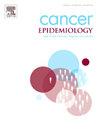Age-specific lung cancer incidence trends in Canada from 1992 to 2022
IF 2.4
3区 医学
Q3 ONCOLOGY
引用次数: 0
Abstract
Background
Lung cancer incidence has historically been higher in males than females, but these rates have been converging. Here we detail the trends in age-specific lung cancer incidence in Canada from 1992 to 2022.
Methods
Lung cancer incidence data from 1992 to 2022 by sex and age were obtained from Statistics Canada. We report lung cancer incidence rates and annual percent changes (APC) based on Joinpoint Regression. Birth cohort effects are presented as incidence rate ratios (IRR) with 95 % confidence intervals (CI).
Results
Lung cancer incidence has decreased among males aged 35 or above with the largest decreases occurring among those 65 or above. Females under 55 showed similar decreasing trends. However, females 55 or above show stable or increasing incidence rates until around 2017 when rates began decreasing significantly. Birth cohort analysis showed males born after 1957 have lower risk compared to those born at of before 1957. Females risk peaked in 1943–47 and the risk after 1957 slowly returned to early twentieth century levels.
Conclusion
The sex difference in lung cancer incidence continues to narrow. Lung cancer rates among males have declined for decades, while the decline among females is more recent and incidence is higher for females at younger ages for the first time.
求助全文
约1分钟内获得全文
求助全文
来源期刊

Cancer Epidemiology
医学-肿瘤学
CiteScore
4.50
自引率
3.80%
发文量
200
审稿时长
39 days
期刊介绍:
Cancer Epidemiology is dedicated to increasing understanding about cancer causes, prevention and control. The scope of the journal embraces all aspects of cancer epidemiology including:
• Descriptive epidemiology
• Studies of risk factors for disease initiation, development and prognosis
• Screening and early detection
• Prevention and control
• Methodological issues
The journal publishes original research articles (full length and short reports), systematic reviews and meta-analyses, editorials, commentaries and letters to the editor commenting on previously published research.
 求助内容:
求助内容: 应助结果提醒方式:
应助结果提醒方式:


